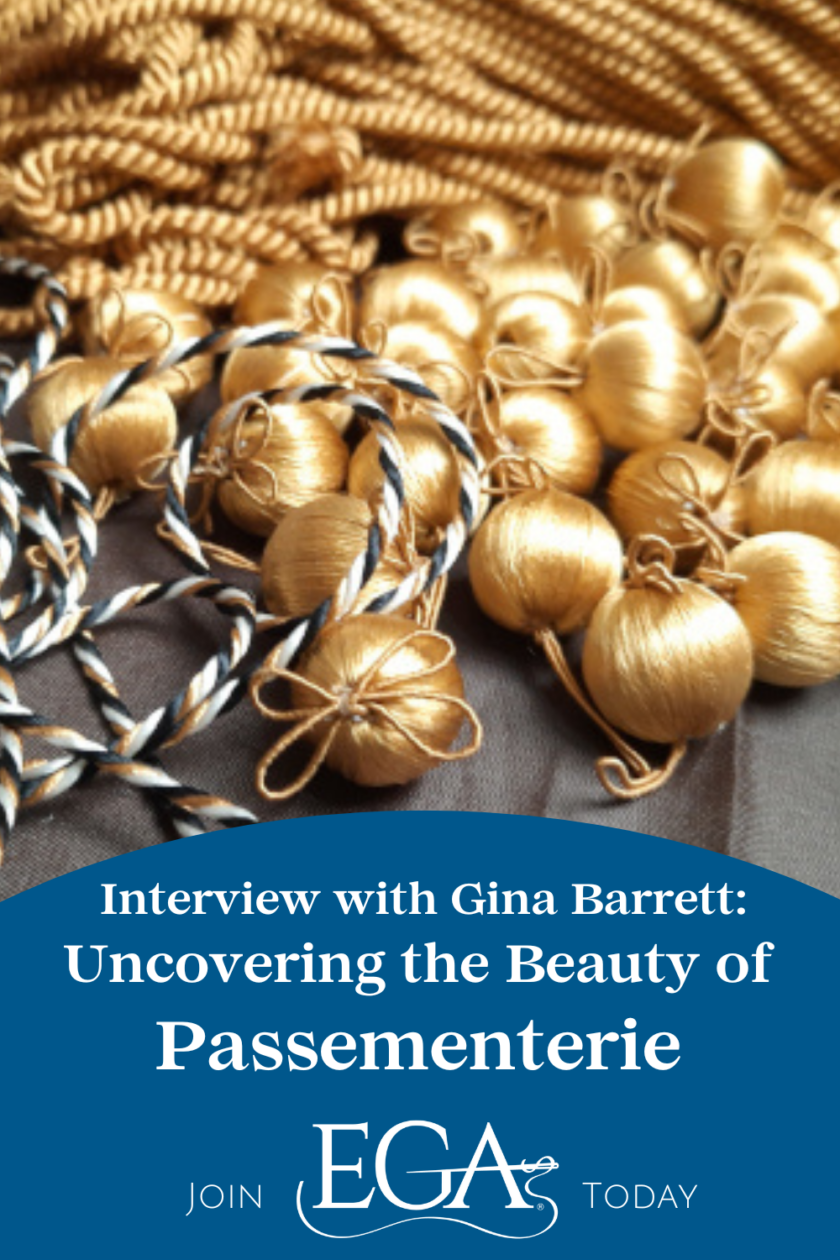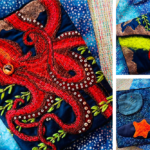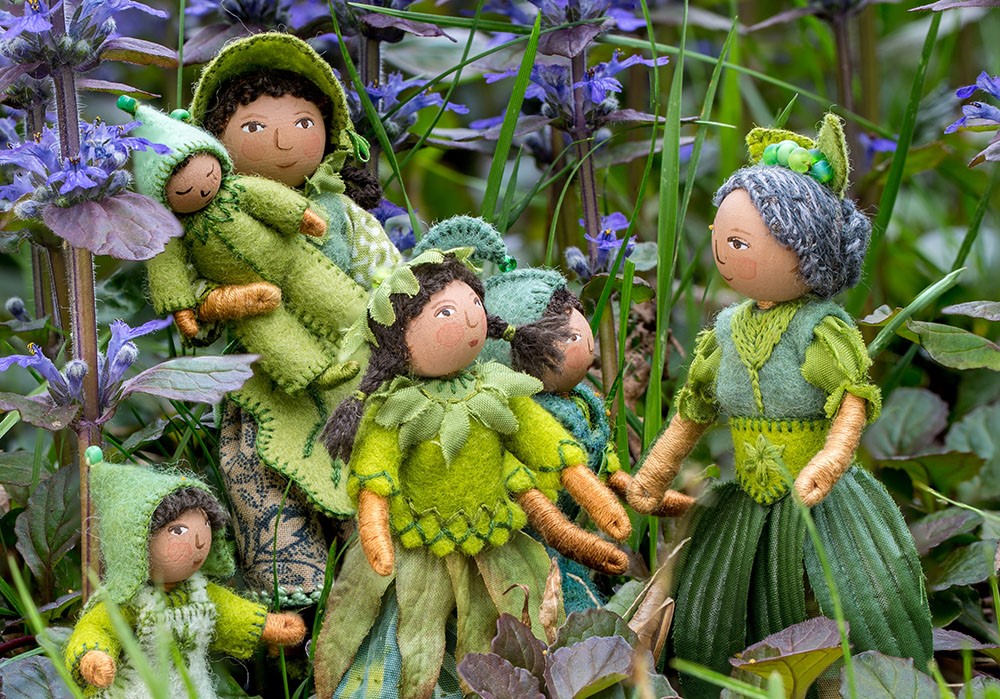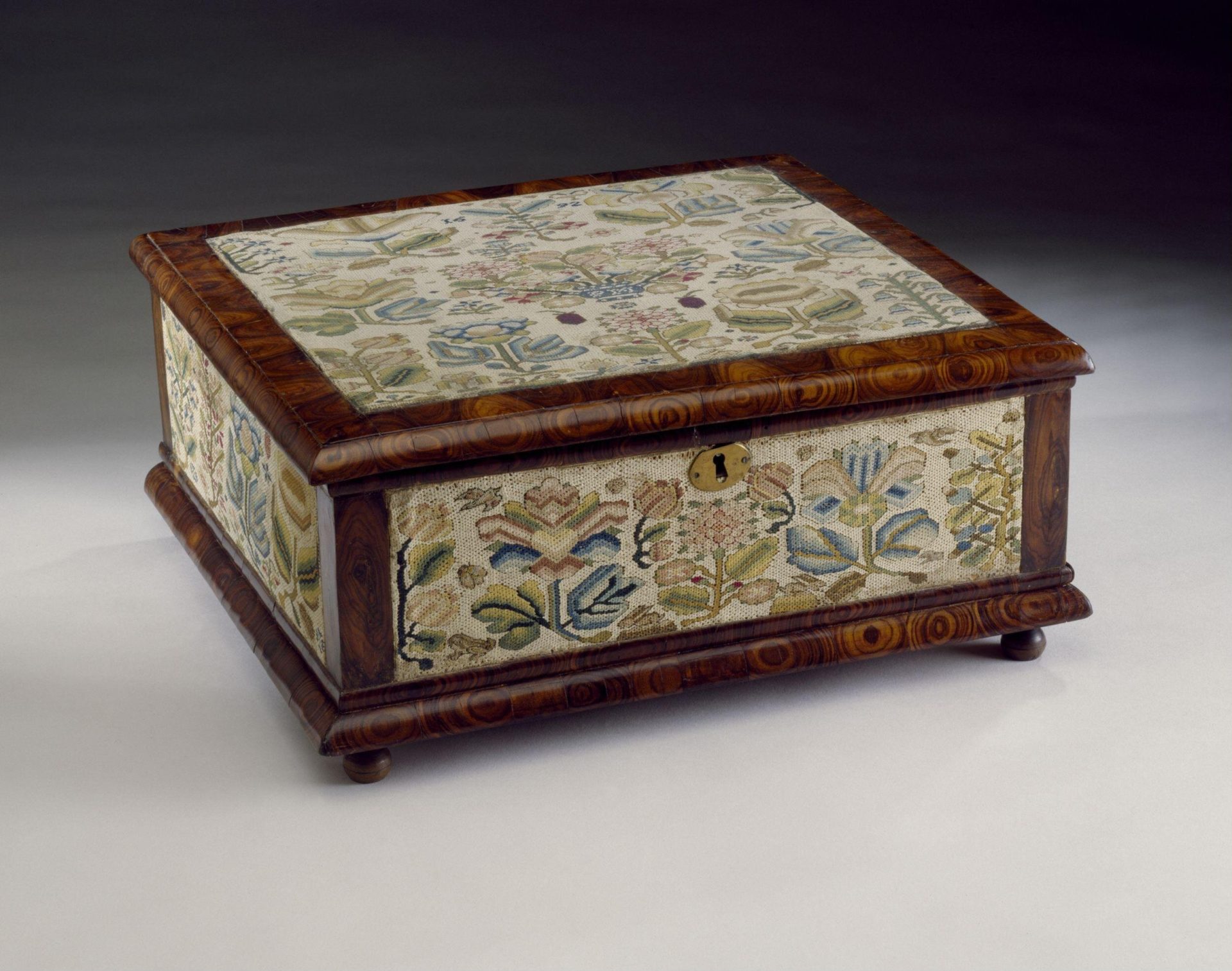Gina Barrett is a textile artist, designer, and writer who loves passementerie (textile trimmings) and needleworked buttons. She has been reconstructing buttons and trimmings for museums, television, cinema, and theater, and fashion labels for several decades. Her love of passementerie has resulted in not just a generous collection of historical trimmings, but also a desire and dedication to rediscovering and reviving old techniques for future generations via Gina-B Silkworks. We sat down with Gina ahead of her upcoming virtual lecture, Curiously Wrought: A Closer Look at Needleworked Buttons, to learn more about this fascinating textile art form and her contributions to it.
You have a passion for passementerie (textile trimmings). When did this passion first start for you?
I really started to focus on trimmings back in the 90s when I discovered that these items were primarily made by women (known as silkwomen) in England during the medieval period. While researching the way that they worked and traded, I began to study the items they may have made, which led to discovering how they may have made them.
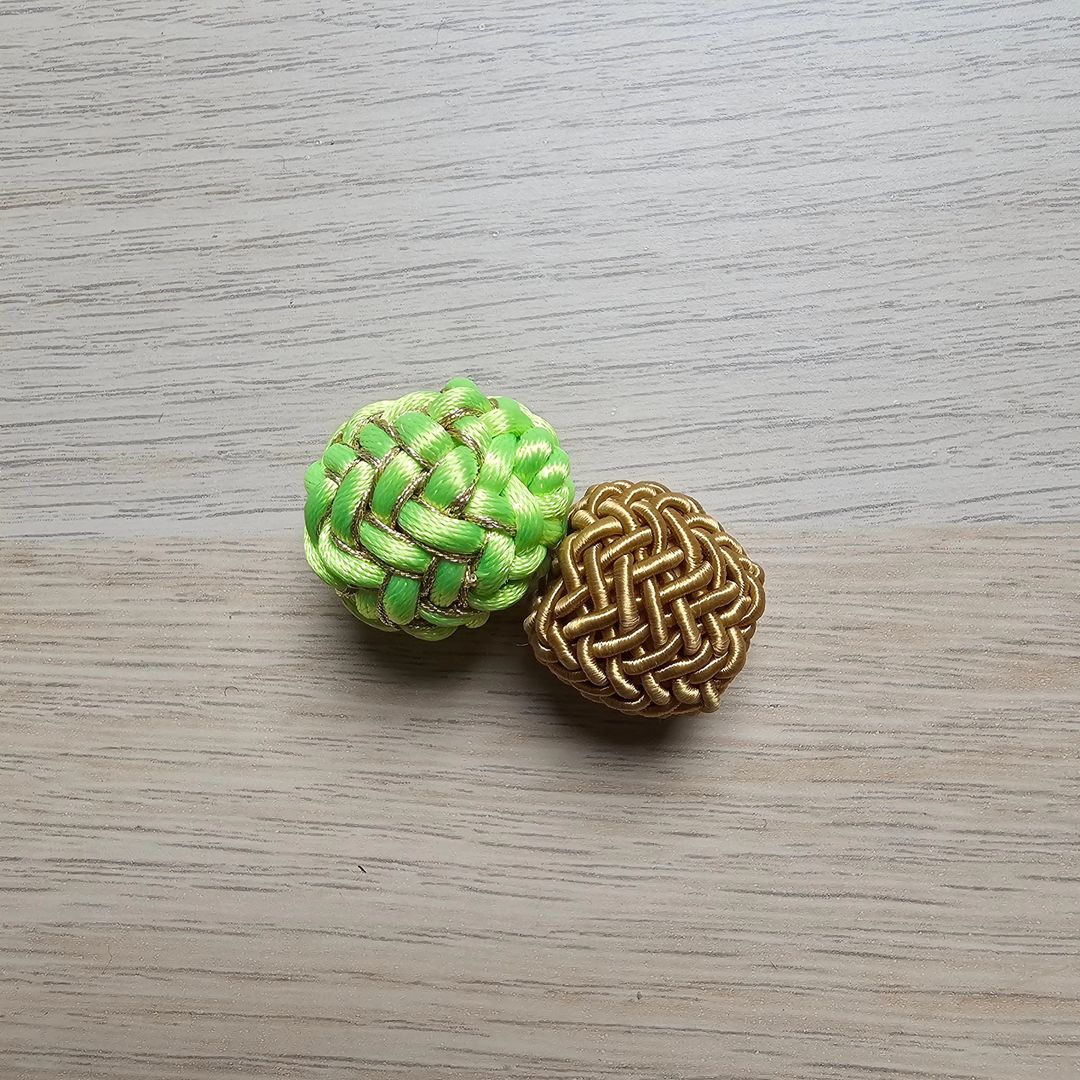
Did needleworked buttons serve a purpose historically, or were they purely ornamental?
Oh yes, they were functional buttons for most of the periods they were made. Changing fashions have determined if they were used as “false” buttons – a row of buttons over a more practical closure such as hooks and eyes.
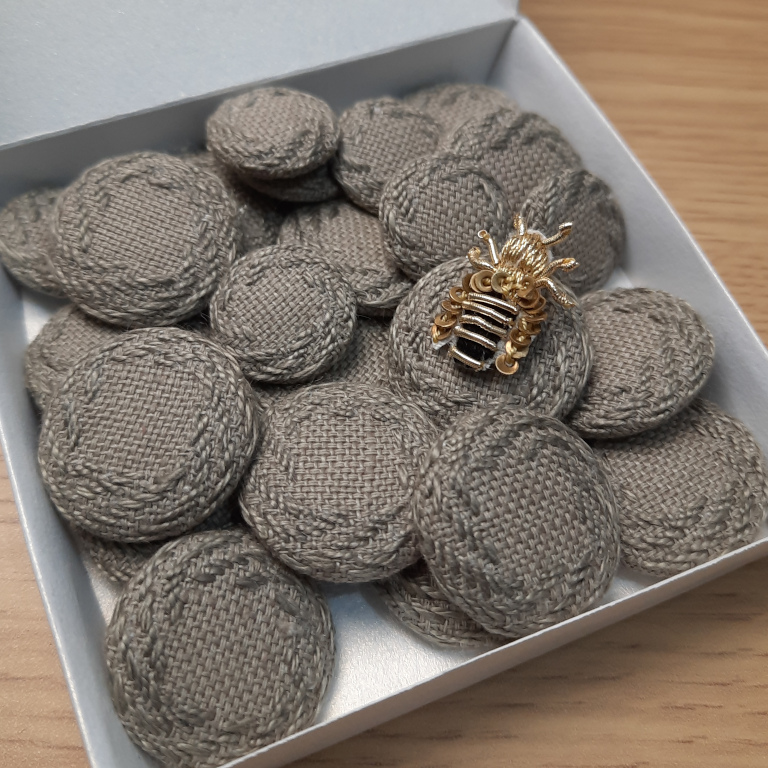
Your reproductions have been featured in films, theater, museums and fashion labels. Are there any pieces of which you’re most proud? Do you have a favorite piece?
Although not buttons, I’m proud to have been entrusted with making tassels for the Royal Household (used on garters for formal breeches). More recently, my work for the film Napoleon was particularly interesting. As the lead actor is vegan, any item destined for his costume had to be animal product free. As silk and wool were most common for the period and they could not be used, finding good substitutes that still appeared correct added extra challenges.

Where do you draw inspiration from for your needleworked buttons?
Original buttons are almost always my starting point – even in a modern button that seems to not have anything in common with antiques. A good foundation I guess you could say.
For my unique designs, I do enjoy patterns and pattern making, but inspiration can come from anything.
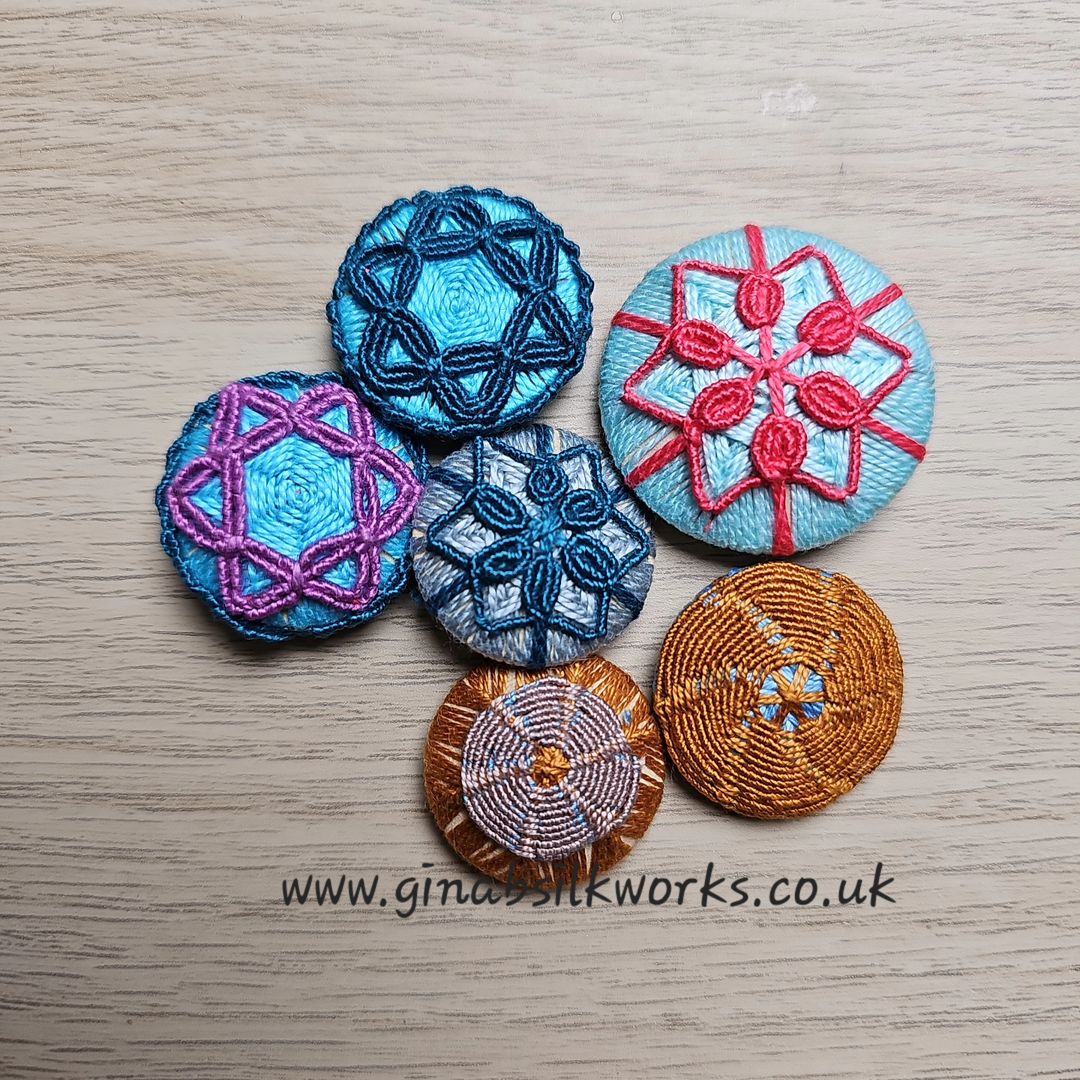
Your bio states that you are “particularly keen to discover lost techniques used to create buttons.” Would you consider needleworked buttons a lost art? What are some examples of a lost technique?
A lost art? Yes and no. When I first began studying and researching, there was very little published, and very little really known. Now, there is a definite revival with many people utilizing handworked buttons into their other crafts. It is classed as “currently viable” by the Heritage Crafts Association (primarily due to the increased interest in Dorset button styles) but only a few years ago it was on the Red List of Endangered Crafts.
Covering a ball with silk thread, also called satin wrapping.
While the original technique is still used in passementerie houses (particularly for larger balls and shapes), today we tend to be taught to simply enlarge a hole and thread around and around. This is time-consuming and wastes thread. Button makers used the passementerie method. Quick, good coverage and leaves the hole free so that decorative stitching can be added.
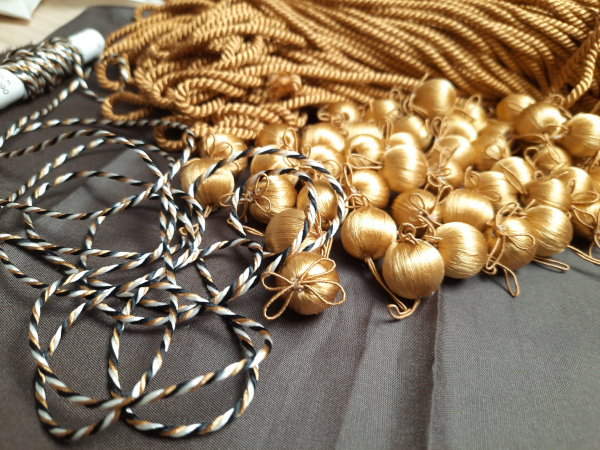
Many stitches aren’t really used in other forms of embroidery. They are more closely related to lace stitches, but as most buttons are seen as embroidered, it becomes difficult for people to recognize the way a decoration may have been made easily. Others appear as bullions or as woven sections, when they are worked by spinning a button or wrapping in a particular order.
Knowing that you’re very keen on discovering lost techniques, we assume you must have a very large collection of very old needleworked buttons! What is the oldest button in your collection? Where did it come from, and what is its historical and/or technical significance?
I do have a large collection!
The oldest in my collection are a few 18th/early 19th century buttons. Exact dating isn’t possible when a button is no longer on a garment, so I could not say which is the oldest. Some techniques were used for hundreds of years. Each of these buttons taught me something—be it the way the weaving or wrapping was worked, how the decoration was worked or even what the core material is. I find it interesting to see the backs—often, much more can be learnt from the back of a button than from the front!

Do you have a favorite technique for needleworked buttons?
No, I honestly don’t. I will have a favourite technique for a period of time, but I don’t think I’ve found a textile button I didn’t like!
What should someone who is totally new to creating needleworked buttons understand before they undertake the craft? Can you recommend any essential tools or resources to provide a starting point?
The first is to narrow down what you like.
Starting point: Visit YouTube (I have a lot of button making videos!). See what takes your fancy. Then you can start to think about learning more.
There are many different button-making techniques. To me, needleworked is quite a specific style within button making, but I realize that without knowledge of the techniques, that could be confusing!
You need good light and remember that you are working small. If it doesn’t work out, don’t worry. Your wastage will only be a little bit of thread or fabric. When you become addicted (as most do) you’ll find that button-making is a great “in between” project—something smaller to rekindle your mojo when working on large, long projects.
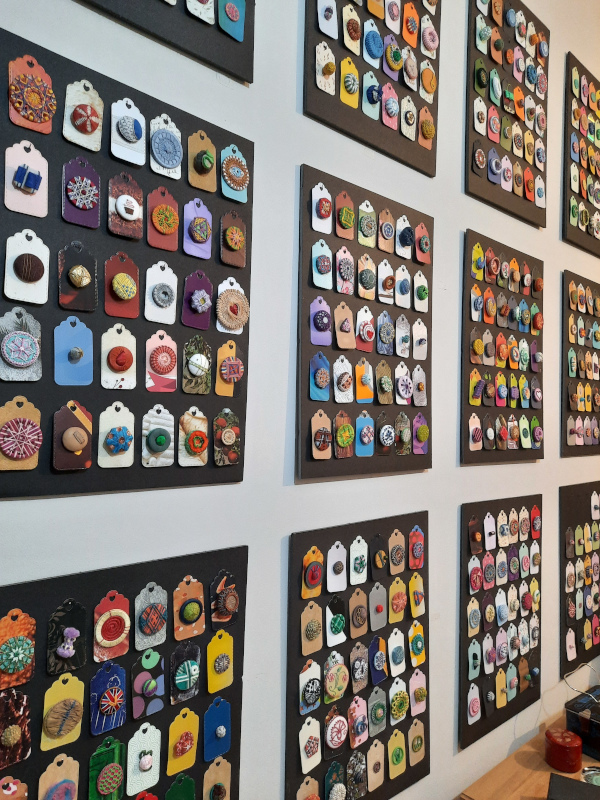
You undertook “One Button A Day” Challenges in 2016 and 2020, and recently “One Button A Week” in 2022, documented on your social media as well as onebuttonaday.co.uk. What did you learn from those experiences?
That the hardest part of any challenge is taking the photos and keeping up with social media! The One Button a Day challenges were, in a way, easier than the One Button a Week. That was a social challenge, and I gave prompts so that other button makers could take part. Working to a single word prompt can be constricting and so more challenging.

Do you have a daily/weekly/monthly practice that you’d recommend to other embroiderers interested in honing their craft?
Practice. And not just the things you are good at. Go back to the techniques you struggled with and practice those.
What embroidery or color trends are you drawn to this year?
That’s difficult. I don’t tend to follow official trends I’m afraid. I love color generally, so tend to work with whatever strikes me at the moment.

What do you hope attendees take away from your lecture on Needleworked Buttons?
A better appreciation of the work and skills of the makers who came before us.
Thank you to Gina Barrett for sharing a peek at her work and process! Interested in learning more about Needleworked Buttons? Register for Curiously Wrought – A Closer Look at Needleworked Buttons with Gina Barrett now! The lecture will take place on Zoom on Saturday April 13, 2024 1PM Eastern. Registration closes on April 11, 2024 1PM Eastern.
